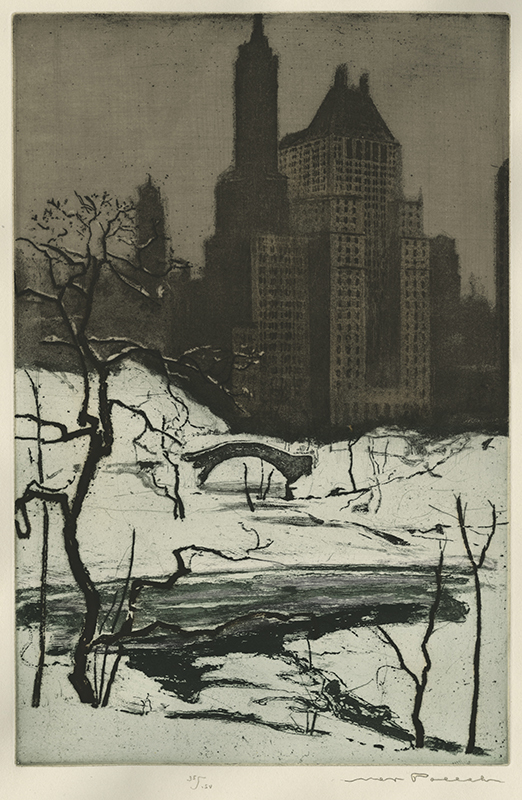
19th, 20th & 21st Century Fine Prints
707-546-7352 · fax 707-546-7924 · web: www.annexgalleries.com · email: artannex@aol.com
New York: Central Park I by Max Pollak

New York: Central Park I
Max Pollak
New York: Central Park I
Max Pollak
1886 - 1970 (biography)This view of the Manhattan skyline is from Central Park on a gray winter day. The now iconic stone bridge is located in the southeast corner of Central Park. Known as the Gapstow Bridge, it was originally built in 1874 as a wooden bridge with ornamental cast iron railings but was replaced about twenty years later with the present stone structure.
The (what were then) new buildings in the distance, around 59th Street and 5th Avenue, include The Sherry-Netherland Hotel (left, with a tower) built in 1927 by Louis Sherry of ice cream fame and fortune, and the Savoy-Plaza Hotel, also built in 1927, but which was torn down in the 1960s to make way for the General Motors Building.
Max Pollak was commissioned by author Theodore Dreiser to do a series of eight color etchings of New York which were then reproduced in his book "My City", published in 1929 by Horace Liveright. This image was not selected for inclusion in the book but was published by Rudolf Lesch Fine Arts, New York. Pollak printed a number of the works while in his Austria, where he was brought up. Though the edition for the New York images was anticipated as 150 Pollak did not finish the whole edition, the stock market crashed the next year, 1929, when Dreiser's book was published, and the economic practicality of printing a full edition disappeared.
